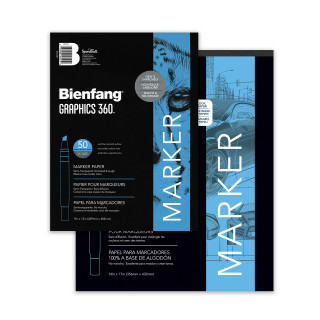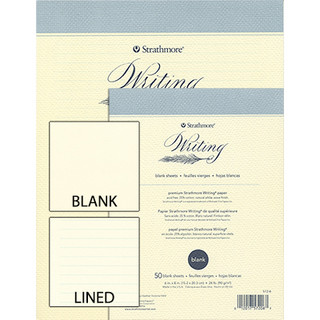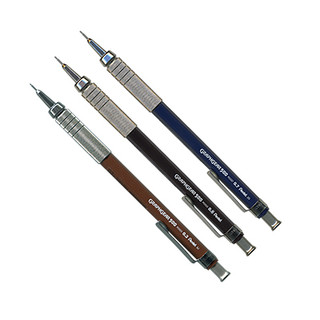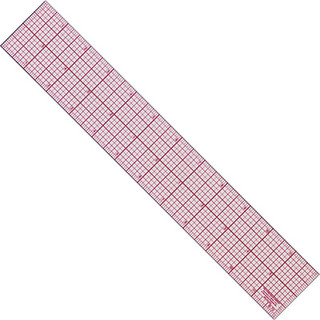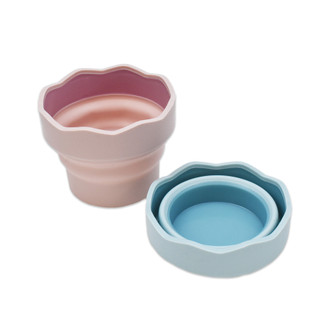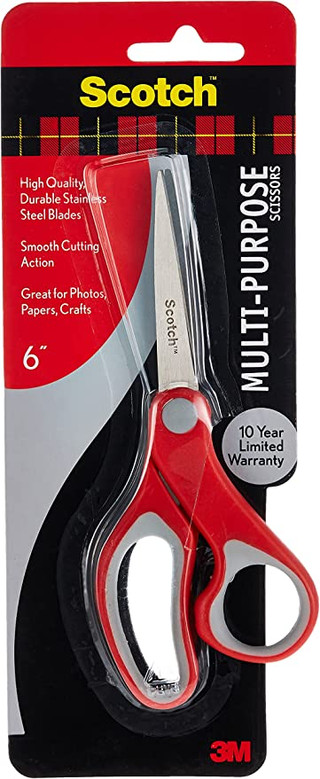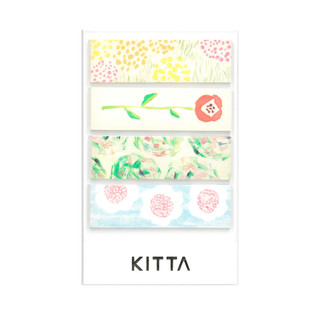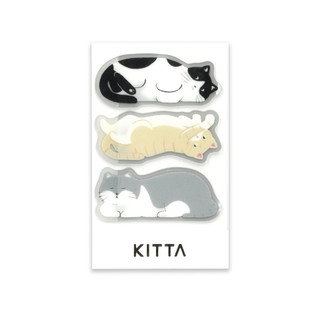Anne Davnes - The Glass Line: Cursive Crush, Open-Shaded Script, Florals, & You - May 07 - June 25, 2025
img:shop.png
The Glass Line: Cursive Crush, Open-Shaded Script, Florals, & You Wed PM SMMR ’25 • All Levels • Live/Recorded Online 8-week Course via Google Meet $224-280 ** - Wed nights from 6-…
Read MoreDescription
The Glass Line: Cursive Crush, Open-Shaded Script, Florals, & You Wed PM SMMR ’25
• All Levels
• Live/Recorded Online 8-week Course via Google Meet $224-280 **
- Wed nights from 6-8:30pm Eastern:::: May 7-Jun 25 ⌛️
**Early Bird price Through Weds, Apr 2 Cursive Crush, Open-Shaded Script, Florals. Hold the energy of transformation working wet into wet with glass dip pens and transparent inks.
- Classes are recorded and available for download within two weeks after last class date. Week 1-4: Cursive Crush, a child of Spencerian calligraphy, focuses on syncing the flow and rhythm of the body, spirit, and mind with the results on our page. We break down each letterform and connection into 2 categories - masculine and feminine strokes. This distinction will improve your cursive handwriting and enrich your enjoyment of this classic, versatile, and useful hand. . Week 5-8: Open-Shaded Script constructs letterforms by describing the swell or shade made by a pointed pen with at least two contour mono line strokes, drawn in the same stroke sequence seen in traditional scripts (Round Hand, Copperplate, etc.) The second stroke of a shade or extension of a hairline acts as a mentor stroke to the previous and is meant to offer gentle correction to curves (if needed) and to suggest the growth of a flourish, all with an open heart and gentle hand.
- Here's the class schedule:
Week 1 • Wed. May 07, 2025 6-8.30pm Eastern
Week 2 • Wed. May 14, 2025 6-8.30pm Eastern
Week 3 • Wed. May 21, 2025 6-8.30pm Eastern
Week 4 • Wed. May 28, 2025 6-8.30pm Eastern
Week 5 • Wed. Jun 04, 2025 6-8.30pm Eastern
Week 6 • Wed. Jun 11, 2025 6-8.30pm Eastern
Week 7 • Wed. Jun 18, 2025 6-8.30pm Eastern
Week 8 • Wed. Jun 25, 2025 6-8.30pm Eastern
• All Levels
• Live/Recorded Online 8-week Course via Google Meet $224-280 **
- Wed nights from 6-8:30pm Eastern:::: May 7-Jun 25 ⌛️
**Early Bird price Through Weds, Apr 2 Cursive Crush, Open-Shaded Script, Florals. Hold the energy of transformation working wet into wet with glass dip pens and transparent inks.
- Classes are recorded and available for download within two weeks after last class date. Week 1-4: Cursive Crush, a child of Spencerian calligraphy, focuses on syncing the flow and rhythm of the body, spirit, and mind with the results on our page. We break down each letterform and connection into 2 categories - masculine and feminine strokes. This distinction will improve your cursive handwriting and enrich your enjoyment of this classic, versatile, and useful hand. . Week 5-8: Open-Shaded Script constructs letterforms by describing the swell or shade made by a pointed pen with at least two contour mono line strokes, drawn in the same stroke sequence seen in traditional scripts (Round Hand, Copperplate, etc.) The second stroke of a shade or extension of a hairline acts as a mentor stroke to the previous and is meant to offer gentle correction to curves (if needed) and to suggest the growth of a flourish, all with an open heart and gentle hand.
- Here's the class schedule:
Week 1 • Wed. May 07, 2025 6-8.30pm Eastern
Week 2 • Wed. May 14, 2025 6-8.30pm Eastern
Week 3 • Wed. May 21, 2025 6-8.30pm Eastern
Week 4 • Wed. May 28, 2025 6-8.30pm Eastern
Week 5 • Wed. Jun 04, 2025 6-8.30pm Eastern
Week 6 • Wed. Jun 11, 2025 6-8.30pm Eastern
Week 7 • Wed. Jun 18, 2025 6-8.30pm Eastern
Week 8 • Wed. Jun 25, 2025 6-8.30pm Eastern
Anne Davnes
Live (Also recorded for later viewing)
05/07/25 - 06/25/25
6:00 PM - 8:30 PM Eastern
Class Cost : $224.00-$280.00 USD
All Skill Levels
Registration Contact Email: anne@annedavnes.com
Supply List:
Paper for practice:
• Bienfang Graphics 360 9"x12" 100% Rag Marker Pad OR Borden & Riley 9"x12" 100s Smooth Cotton Comp Pad Paper for envelopes and final projects: Pick at least one or ALL if you're wanting to try a variety. (P41)
• Fave is Craneís Lettra Pearl White 32 lb writing paper by Crane & Co. Comes in reams of 250 in 8.5 x 11. Soft and buttery - it is great for markers, paints, fountain pens, BUT not so great with pointed pen.
• Strathmore Calligraphy Writing Paper Pad 8.5 x 11. (P76)
• Southworth Resumé paper by Neenah. Comes in white or ivory and has two weights: 24lb and 32 lb. I've used both for folding letters/envelopes. Works will with Pointed pen and everything else.
Pens:
Two of my favorites are a fine-nib fountain pen and a glass dip pen. With both, you enjoy watching wet inkpool and dry at the end of a stroke. It can give your strokes a depth hard to achieve with markers. You don't need an expensive fountain pen.
• Lamy Safari. Get a fine or medium. I'd also recommend purchasing a converter for it so you can fill the pen with the colors of your choice. I highly recommend purchasing bottles of fountain pen ink as opposed to pre-loaded cartridges.
• Prera by Pilot. Get a fine or medium. These have a lovely feel to them with the cap snapping into place and come in fun colors.
Glass dip pens:
Glass pens come from all over the world, and they CAME from all over the world - Europe, Asia... in all kinds of crazy glass shapes from tip to end. They can be fragile, so make sure to protect the tip (and handle, if itís also made of glass.) I use a plastic inkwell and water container when using a glass pen/nib. My penrest is a washcloth folded in half, then thirds. This keeps my pen from rolling off the table, and it keeps it cradled on a pillowy surface. Any internet search will give you a variety of glass dip pens. I have a few that have a glass nib with a plastic or wooden body. These come with the option of replacing the nibs that screw in. They also come with a threaded cap. You can also get a full body glass pen - the entire piece is made of one hand-blown piece of glass. My current faves are by J.Herbin (Herbin Round Glass Dip Pens). They are well balanced and gorgeous, with several different places to place your fingers and adjust your grip. The advantage of a glass dip pen is that you have the option to mix your inks, double dip, and even re-dip in water to make your ink color more transparent. Very much like painting, I have recently fallen deeply in love with glass dip pens and my variety of ink wells in a warm blue, cool blue, warm green, deep yellow ochre or warm gold, and red or violet. With a variety of inks on hand, you can really have fun with mixing. My preferred paper for glass nibs is Crane's Lettra in writing weight. Its 100% cotton sheet is soft, absorbant, and won't bleed the inks. Finding the right paper/glass combo is really important for a pleasureable writing experience. This is also an individual choice - so be prepared to experiement and find your sweet spot - what works for you. Also remember that every glass nib is handmade by a glassblower at the mouth of a glass oven... so each nib, all over the world is unique. After they are blown, theyíre sharpened with sandpaper and ground evenly to a point that connects to the deep ridges (also called capillaries) where the ink falls and flows down to the surface of your paper, using gravity to pull ink to the point. Because glass nibs/pens are handmade, they can come with imperfections. If that happens to you, SAVE YOUR RECEIPT AND GET A REPLACEMENT. I've seen glass pen makers do their own filing and repair on chipped nibs or some with tiny burs... it's a meticulous process to grind to an even point and connect to all the capillaries, too. Seriously - I don't even bother. I've tried and failed to grind my own nibs, but if you're determined to try, get on YouTube and watch vids of penmakers reshaping and grinding their nibs. PLEASE. when you're purchasing your glass pens, get at least two to experiment with. They are easier to use than a metal dip pen nib, but they are still uniquely mysterious. So give using these magical writing tools some time with your hands and a variety of paper. See what works for you. SO, to find a good variety of colors, look for a selection of colors that you'll enjoy mixing. Start with a red, blue, yellow, and black, and see how much fun it is to make new colors as you mix them. Remember to put these colors into smaller containers so that you're not contaminating the original larger bottle. Look to the next page to see the colors I'm loving now. For regular writing in one fountain pen with one ink, my faves are transparent grey inks: MontBlanc/Oyster Grey and Kiri-Same/Iroshizuku. These come in bottles and you'll have to make sure you get a converter for your fountain pen instead of a box of cartridges, so you can fill your pen with bottled ink (more economical but a little more high-maintenance.) (H2002, I2103)
Misc:
• Mechanical Pencil (for drawing guides.) (PL21)
• SOFT erasable pencil for light sketching. (PL38)
• Eraser (white) (E13)
• Eraser (2 kneaded) (E09)
• PLASTIC ruler (S798)
• PLASTIC water container (S1695)
• Washcloth to clean pen and as a penrest
• Scissors (S1665)
• Decorative Washi Tape (for envelopes.) (A100, A101)
• Bone Folder (for envelopes.) (S308)
• Postage Stamps (for envelopes.)
• Bienfang Graphics 360 9"x12" 100% Rag Marker Pad OR Borden & Riley 9"x12" 100s Smooth Cotton Comp Pad Paper for envelopes and final projects: Pick at least one or ALL if you're wanting to try a variety. (P41)
• Fave is Craneís Lettra Pearl White 32 lb writing paper by Crane & Co. Comes in reams of 250 in 8.5 x 11. Soft and buttery - it is great for markers, paints, fountain pens, BUT not so great with pointed pen.
• Strathmore Calligraphy Writing Paper Pad 8.5 x 11. (P76)
• Southworth Resumé paper by Neenah. Comes in white or ivory and has two weights: 24lb and 32 lb. I've used both for folding letters/envelopes. Works will with Pointed pen and everything else.
Pens:
Two of my favorites are a fine-nib fountain pen and a glass dip pen. With both, you enjoy watching wet inkpool and dry at the end of a stroke. It can give your strokes a depth hard to achieve with markers. You don't need an expensive fountain pen.
• Lamy Safari. Get a fine or medium. I'd also recommend purchasing a converter for it so you can fill the pen with the colors of your choice. I highly recommend purchasing bottles of fountain pen ink as opposed to pre-loaded cartridges.
• Prera by Pilot. Get a fine or medium. These have a lovely feel to them with the cap snapping into place and come in fun colors.
Glass dip pens:
Glass pens come from all over the world, and they CAME from all over the world - Europe, Asia... in all kinds of crazy glass shapes from tip to end. They can be fragile, so make sure to protect the tip (and handle, if itís also made of glass.) I use a plastic inkwell and water container when using a glass pen/nib. My penrest is a washcloth folded in half, then thirds. This keeps my pen from rolling off the table, and it keeps it cradled on a pillowy surface. Any internet search will give you a variety of glass dip pens. I have a few that have a glass nib with a plastic or wooden body. These come with the option of replacing the nibs that screw in. They also come with a threaded cap. You can also get a full body glass pen - the entire piece is made of one hand-blown piece of glass. My current faves are by J.Herbin (Herbin Round Glass Dip Pens). They are well balanced and gorgeous, with several different places to place your fingers and adjust your grip. The advantage of a glass dip pen is that you have the option to mix your inks, double dip, and even re-dip in water to make your ink color more transparent. Very much like painting, I have recently fallen deeply in love with glass dip pens and my variety of ink wells in a warm blue, cool blue, warm green, deep yellow ochre or warm gold, and red or violet. With a variety of inks on hand, you can really have fun with mixing. My preferred paper for glass nibs is Crane's Lettra in writing weight. Its 100% cotton sheet is soft, absorbant, and won't bleed the inks. Finding the right paper/glass combo is really important for a pleasureable writing experience. This is also an individual choice - so be prepared to experiement and find your sweet spot - what works for you. Also remember that every glass nib is handmade by a glassblower at the mouth of a glass oven... so each nib, all over the world is unique. After they are blown, theyíre sharpened with sandpaper and ground evenly to a point that connects to the deep ridges (also called capillaries) where the ink falls and flows down to the surface of your paper, using gravity to pull ink to the point. Because glass nibs/pens are handmade, they can come with imperfections. If that happens to you, SAVE YOUR RECEIPT AND GET A REPLACEMENT. I've seen glass pen makers do their own filing and repair on chipped nibs or some with tiny burs... it's a meticulous process to grind to an even point and connect to all the capillaries, too. Seriously - I don't even bother. I've tried and failed to grind my own nibs, but if you're determined to try, get on YouTube and watch vids of penmakers reshaping and grinding their nibs. PLEASE. when you're purchasing your glass pens, get at least two to experiment with. They are easier to use than a metal dip pen nib, but they are still uniquely mysterious. So give using these magical writing tools some time with your hands and a variety of paper. See what works for you. SO, to find a good variety of colors, look for a selection of colors that you'll enjoy mixing. Start with a red, blue, yellow, and black, and see how much fun it is to make new colors as you mix them. Remember to put these colors into smaller containers so that you're not contaminating the original larger bottle. Look to the next page to see the colors I'm loving now. For regular writing in one fountain pen with one ink, my faves are transparent grey inks: MontBlanc/Oyster Grey and Kiri-Same/Iroshizuku. These come in bottles and you'll have to make sure you get a converter for your fountain pen instead of a box of cartridges, so you can fill your pen with bottled ink (more economical but a little more high-maintenance.) (H2002, I2103)
Misc:
• Mechanical Pencil (for drawing guides.) (PL21)
• SOFT erasable pencil for light sketching. (PL38)
• Eraser (white) (E13)
• Eraser (2 kneaded) (E09)
• PLASTIC ruler (S798)
• PLASTIC water container (S1695)
• Washcloth to clean pen and as a penrest
• Scissors (S1665)
• Decorative Washi Tape (for envelopes.) (A100, A101)
• Bone Folder (for envelopes.) (S308)
• Postage Stamps (for envelopes.)
Shop supplies for this class:









